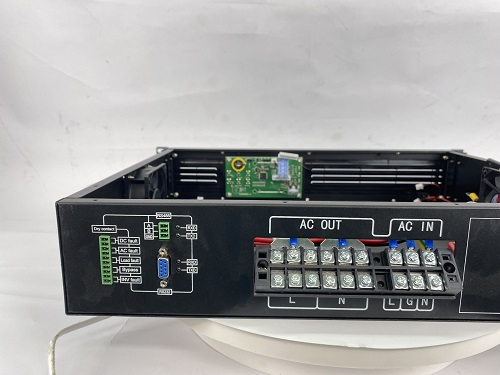
As more and more photovoltaic applications come into life, photovoltaic power generation systems installed on or near buildings are becoming more common. Compared with other types, the installation environment of household distributed power stations is more complicated. In addition to the pursuit of system efficiency and stability, security issues have finally attracted enough attention from the market.
With the introduction of safety access and technical specifications for photovoltaic products in China, Asia and other places, safety has become the consensus of the entire industry.
BWITT will introduce an important way for inverters to ensure system safety. As the core of the photovoltaic system, when an abnormal situation occurs, if the system operator can remotely shut down the inverter with one key, the inverter will stop power output and disconnect the connection to the grid to ensure the photovoltaic system. Safe and maintain the stability of the power grid.
The basic principle of one-key remote shutdown
Photovoltaic power generation systems generally consist of solar photovoltaic modules, photovoltaic inverters, distribution boxes, and monitoring operation and maintenance platforms. The inverter is the most critical part of the photovoltaic system. It undertakes the key tasks of the system, including the grid-connected power generation function and the monitoring data communication function. In short, the one-key remote shutdown function is realized by adding the corresponding functional circuit inside the inverter and installing a signal switch in the main control room.
The realization of the one-key remote shutdown function requires the coordinated realization of three parts: control switch, remote communication and signal control inside the inverter.
1. Control switch. The control switch is installed in the remote control room, which is generally located on the first floor of the building. When encountering system abnormalities or emergency situations, the operator can send a remote shutdown signal by pressing the control switch. The control switch can be a common emergency stop switch on the market.

2. Remote communication. The remote shutdown signal is transmitted through a wired channel, and a communication cable such as RS485 can be used to connect the inverter and the emergency stop switch. In the case of multiple inverters, the communication cable that transmits the remote shutdown signal can be connected by hand in hand, which is the same as the connection method of the RS485 cable. When the operator presses the emergency stop switch, the remote shutdown signal can be sent to multiple inverters in parallel at the same time, so that multiple inverters can stop grid connection and power output.
3. Signal control. The corresponding functional circuit inside the inverter can receive the remote shutdown signal and transmit the signal to the controller DSP to order the inverter to stop power output and disconnect from the grid. Since there is no output on the AC side, the inverter module of the inverter and the DC input boost module will stop working, and the power input on the DC side is almost zero.
The one-key remote shutdown signal can achieve millisecond shutdown control, which can realize the functions of protecting the inverter and maintaining the stability of the grid, and can also realize the flexible control of the inverter's power output. For inverters with one-key remote shutdown function, we can not only realize the purpose of one-key remote safe shutdown, that is, play a role of safety protection, but also realize the function of remotely controlling the power output of the inverter.
The above is the description of bwitt's remote monitoring of the inverter. bwitt's inverter power supply supports completely independent RS485 and rs232 communication interfaces, supports real-time data communication functions, and can use computer software to monitor and manage the working conditions of the inverter in real time (standard configuration).
